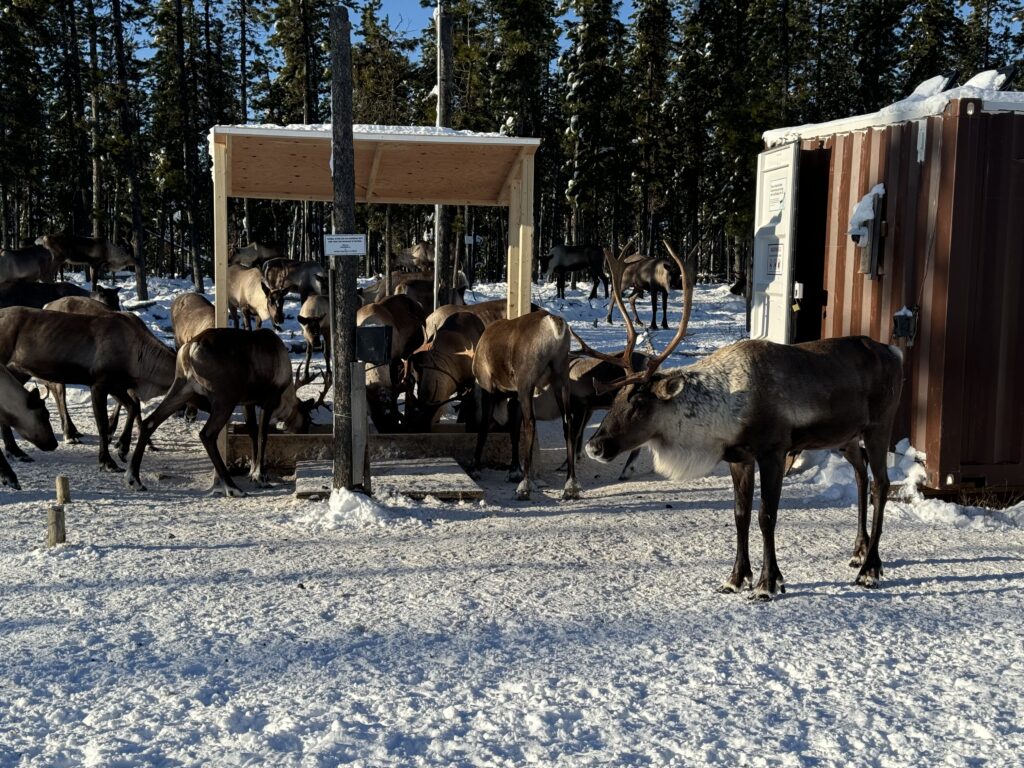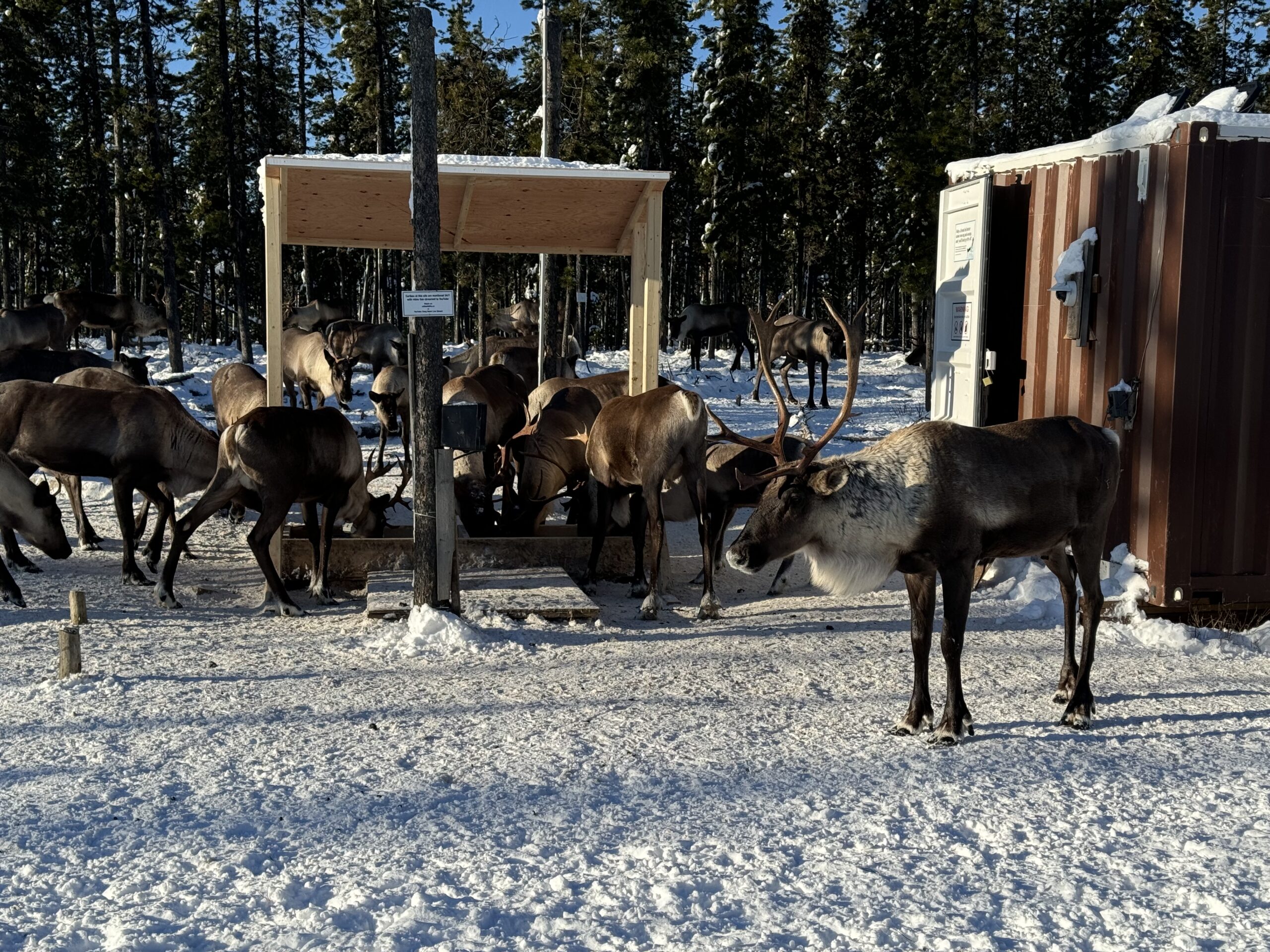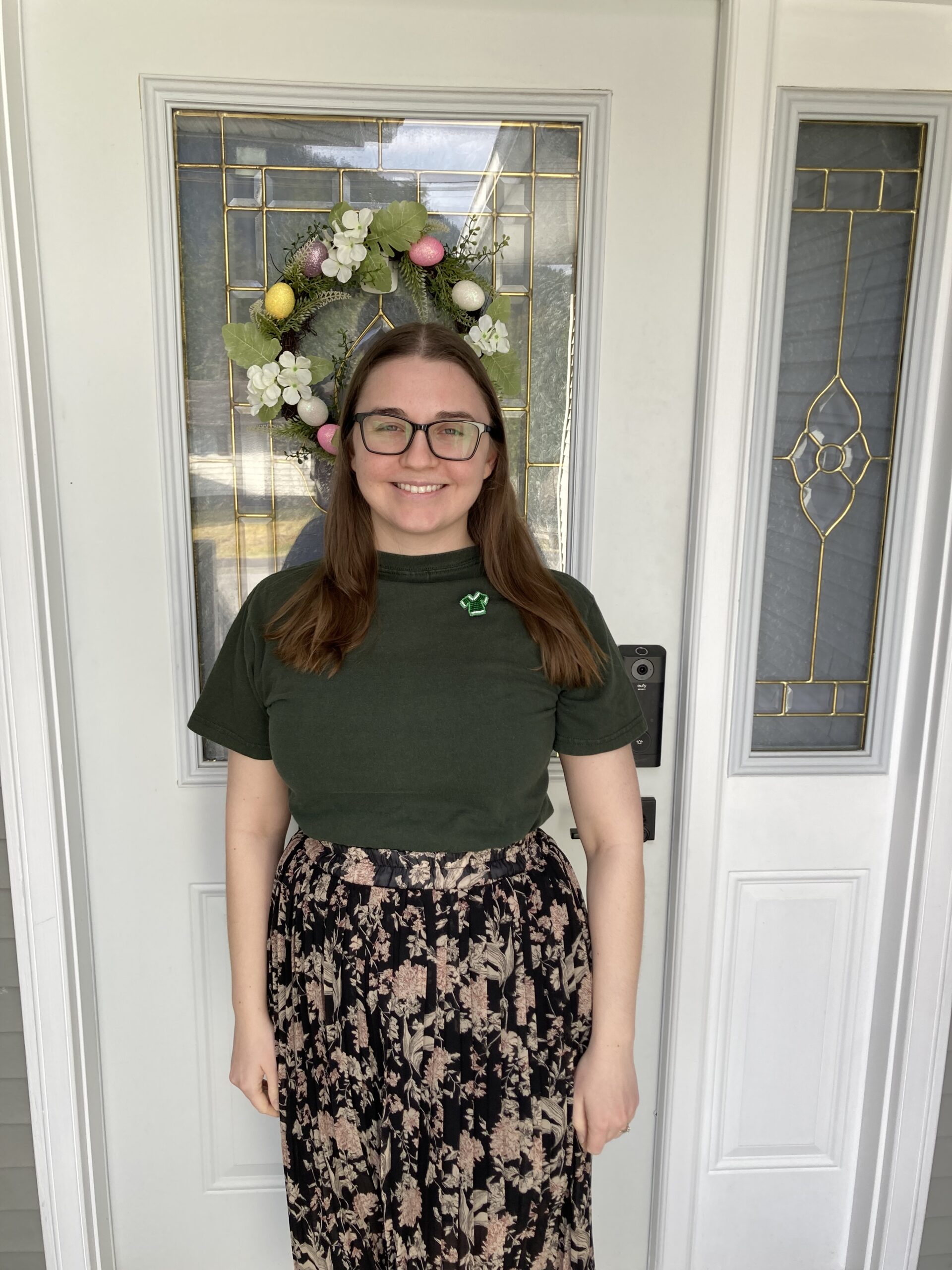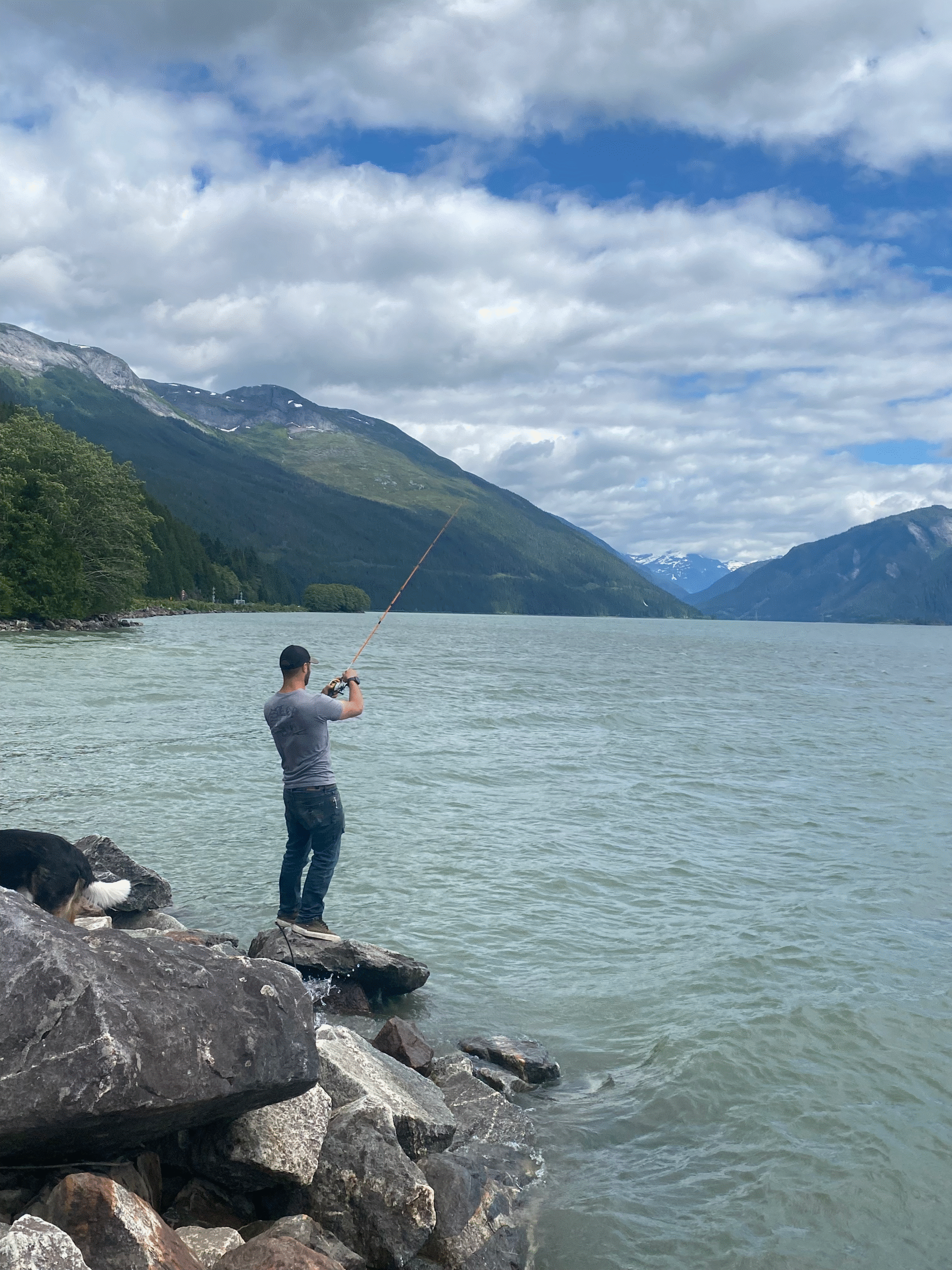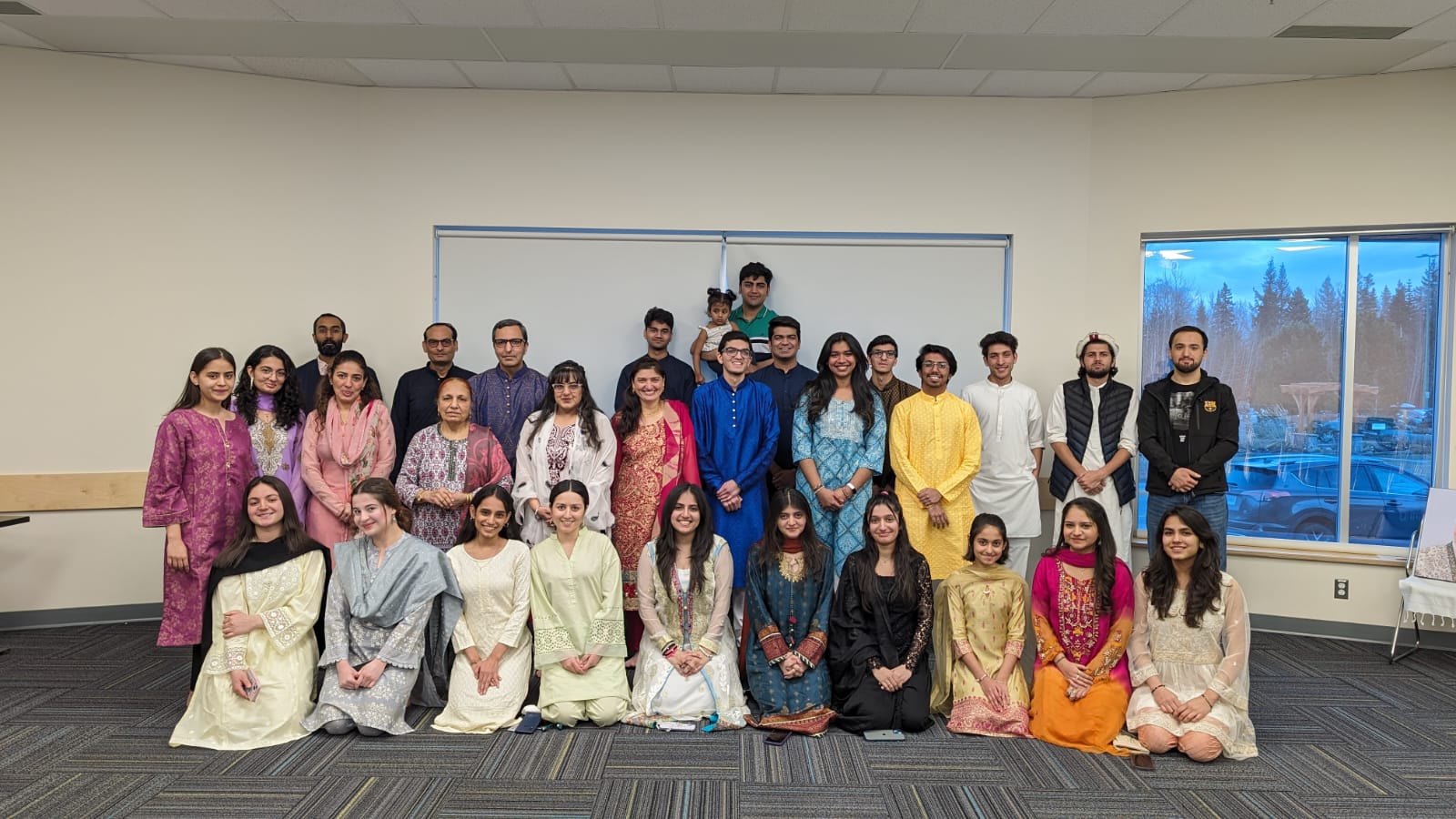The sound of clacking antlers greets visitors immediately upon exiting their vehicle. Only meters away from the dirt road, male caribou spar in pairs while others jostle for positions next to the feeding trough. Dozens of animals wander around the area, with young ones trotting after mothers and males locking antlers. As our group takes in the scene and starts snapping photographs, Doug Heard, a researcher specializing in caribou management and experienced with this herd, appears from behind the research station and welcomes us to come closer to see his current work.
This herd of caribou visits Kennedy Siding, a short distance from Mackenzie, reliably every year on their migration route. They’ve come down from the mountains to avoid the deep, soft snow that settles in the early part of winter. They also know that food is available here; in addition to natural lichens, there is a feeding trough next to the research station filled with pellets containing oats, alfalfa, corn, soybeans, and many micronutrients. The trough is refilled regularly by Doug and other researchers from UNBC as well as by members of the McLeod Lake Indian Band. This feeding plan is one part of the research on this herd that has been ongoing since 1992, with the supplemental feeding beginning in 2014. Due to a combination of management treatments, from the supplemental feeding to wolf population control, this herd’s numbers have increased from 41 individuals in 2012 to now exceeding 115.
Doug introduces us to another aspect of the research: collection of hair samples. He demonstrates a simple claw arm device that pulls a small clump of loose hair from caribou eating pellets. After photographing each sampled caribou, he stores the hair in a labeled baggie inside the station. He then presents a more high-tech method: a gadget that shoots out a small clip like a frog’s tongue to grab hair samples, which is then reeled back in like a fishing rod. The DNA within these samples will be analyzed to determine population ancestry, parentage, and even specific ages of calves who have been analyzed each year from birth.
Throughout our visit, caribou come and go from the feeding trough constantly. Despite being only meters away, they’re used to seeing people and ignore us amidst their pushing and nudging to get close to the trough, which is equipped with a scale to weigh them as they eat. After capturing a few hair samples and photographing the most striking sets of antlers, it’s time to leave. We make our way back to the vehicle, weaving between caribou and trees, taking a final glance at the sea of motion as the animals continue to spar and play, their breath steaming and beads of snow glistening on their winter coats in the morning sunlight.
With the continuation of management treatments and longer-term conservation measures, this herd is expected to continue growing, though habitat loss or increasing predator populations could reverse this trend. The positive results indicate the importance of expanding research and conservation efforts to preserve threatened species like the Woodland Caribou. Doug encourages members of the UNBC community to visit the herd in mid-to-late fall for a unique opportunity to photograph these animals up close. When proper caution and respect is shown, the caribou become relatively comfortable with people. The chance to see caribou in their natural environment may not exist within students’ lifetimes, making this an excellent opportunity to experience what the north has to offer.

